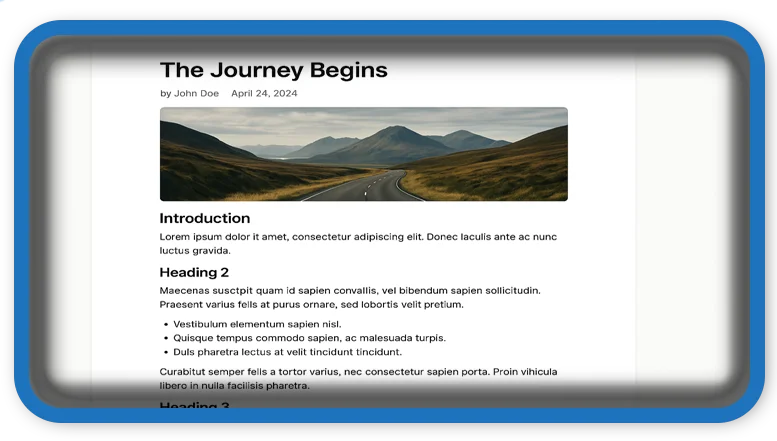⏲️ Estimated reading time: 3 min
How to Create a Well-Structured WordPress Post: Step-by-Step Guide. A well-structured WordPress post boosts SEO, improves readability, and keeps your readers engaged. Follow these simple steps to craft content that ranks and resonates.
🧱 Why Structure Matters in Blog Posts
Whether you’re writing for SEO, user engagement, or clarity, post structure is key. A structured article:
- Helps Google understand your content.
- Makes reading easier for users.
- Encourages longer page visits and interaction.
Let’s walk through the complete steps to create a compelling and organized WordPress post.
✍️ Step 1: Choose a Clear and SEO-Friendly Title
Your title should:
- Include the main keyword early.
- Be under 60 characters.
- Spark curiosity or offer value (e.g., “How to…” or “Top 10…”).
Example: “How to Start a Blog in 2025 – Beginner’s Blueprint”
🧩 Step 2: Write a Compelling Excerpt
The excerpt (meta description) appears in Google search results. It should:
- Be around 20–40 words.
- Summarize the content’s value.
- Contain your keyword.
Example: “Want to start a blog in 2025? This beginner-friendly guide walks you through every essential step to launch a successful blog that ranks and earns.”
📑 Step 3: Use Proper Heading Tags (H2, H3)
Organize your content using headings:
- Use H2 for main sections.
- Use H3 for subsections under H2s.
- Avoid skipping heading levels (e.g., H2 → H4 is bad practice).
📌 Tip: Headings help readers skim and search engines index your content better.

✍️ Step 4: Craft an Engaging Introduction
Start with:
- A hook to grab attention.
- A quick overview of what the post will cover.
- Maybe a question, stat, or relatable scenario.
Example:
“Struggling to organize your blog content? A great structure is the difference between a blog post that gets ignored and one that converts.”
📷 Step 5: Add Media and Visual Elements
Use:
- Featured images (16:9 ratio).
- In-post images, infographics, or videos.
- Alt text for SEO and accessibility.
📸 Tip: Use tools like Canva or Unsplash for visuals.
🔍 Step 6: Optimize for SEO
Include:
- Your focus keyword in the title, headings, and naturally in the text.
- Internal links to your own posts.
- External links to reputable sources.
- Keyword in slug (URL).
- Image alt tags and meta description.
Plugin suggestion: Yoast SEO or Rank Math.
✒️ Step 7: Use Short Paragraphs and Bullet Points
To boost readability:
- Keep paragraphs under 4 lines.
- Use bullet points and numbered lists.
- Bold important keywords or phrases.
🧠 Step 8: Add a Strong Conclusion and Call-to-Action
Summarize the key points. End with:
- A call-to-action (e.g., comment, share, download).
- Related articles for further reading.
“Now you know how to structure a blog post. What’s your favorite trick? Let us know in the comments!”
🔄 Step 9: Preview and Proofread
Before publishing:
- Click Preview to see how it looks.
- Check for typos, formatting issues, or broken links.
- Use tools like Grammarly for polish.
🚀 Step 10: Hit Publish and Promote
- Schedule or publish immediately.
- Share on social media (use hashtags).
- Submit to Google Search Console if it’s an important post.
🔁 Don’t forget to update your post over time with new insights!
📩 Do you have questions or suggestions? Leave a comment or contact us!
🏷️ Tags: wordpress tips, content creation, blog structure, seo blog post, blogging for beginners, heading tags, meta description, featured image, readability, wordpress seo
Only logged-in users can submit reports.
Discover more from HelpZone
Subscribe to get the latest posts sent to your email.

